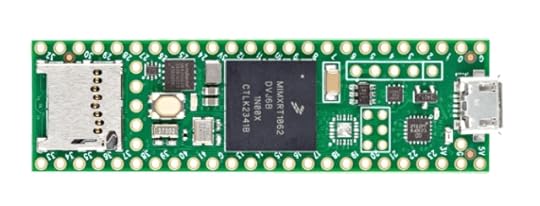M8 Headless Experiment

This was a satisfying series of initial steps. I have an M8 Tracker, which is a music-making device that combines a sequencer (hence the name “tracker”), a synthesizer, and a sampler, all in the palm of your hand. The M8 exists in part because of the creative opportunities afforded by the Teensy (specifically the 4.1), an inexpensive (roughly $35US) circuit board for product development.
Since the M8 runs on this common tool, and because Dirtywave, the manufacturer of the M8, makes its software available for download, you can make your own M8 equivalent pretty easily. Doing so is usually accomplished by hooking a Teensy to a game system or a laptop. I decided to try the latter, using a MacBook Pro, to begin with. This process is called a “headless” approach, though it’s not quite headless, because you’re using the game system or laptop as the screen.

The instructions, as laid out on Dirtywave’s GitHub documentation, were fairly easy to follow. I only encountered two sources of confusion:
First: Under Step 3 (“Install a M8 Display Client and Run M8 Headless”) of the headless process, there are three primary options for the Teensy to feed visuals through the laptop. However, the way it’s written out, it looked to me like the first two options had one step, whereas the third option had multiple steps. I didn’t initially understand those subsequent steps applied the first and second options, as well.
Second: I was confused that when the Teensy connected to my laptop via a USB cable, I didn’t see the SD card mounted via the MacBook’s file system. The SD card not appearing in the Finder meant I couldn’t transfer audio files, like beats and field recordings. I eventually sorted out that I needed to remove the SD card, and put it separately into the laptop in order to transfer files. Not a big deal, but this wasn’t self-evident to me. I interpreted this as a problem to be solved, not a norm I had to work around.
And that about covers it. The M8 Tracker is now running headless on my laptop, as shown up above. I ordered a little $10 plastic case to (somewhat) protect the Teensy 4.1, which is just a raw circuit board. And I’ll be experimenting some more.
The primary reason I did all this was because I’ve been looking into alternate firmware, and while to my knowledge there is no fork of the M8 software, this project was useful to give me some experience with flashing software to the Teensy. Also, I really enjoy my M8 Tracker, and using the headless Teensy version means I’ll have more ways to play around with the system.



